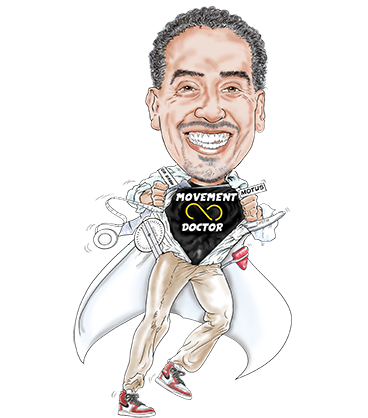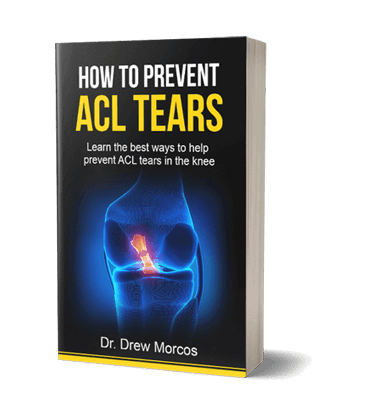M.E.A.T. vs R.I.C.E.
When it comes to treating acute injuries, the R.I.C.E. method seems to be the go-to protocol. Many people, athletes or not, have heard the term tossed around at some point in their life, and may have used it to address an injury just after it occurred.
However, as people are paying closer attention to results and the long- and short-term effects of the R.I.C.E. protocol, they’re finding that it may not be the best way to address acute injuries. We’re entering a new era of treatment, where the M.E.A.T. protocol is proving to be the better option.
R.I.C.E. Method
Think back to your high school gym class. If you hurt your ankle in a game of basketball, your school nurse probably had you elevate it and wrap it in an ice pack. This classic response to acute injury is part of the R.I.C.E. method.
- Rest
- Ice
- Compression
- Elevation
The first element of R.I.C.E. is rest. Keeping the injured area still was long thought to encourage healing by preventing any interruptions with the fibrin bond. Fibrin is a protein that is used in homeostasis, the process where the blood clots to prevent flow and heal an injury. By resting an injury, you would be avoiding stress and strain and making space for healing.
Ice is the next step, and it refers to any type of cryotherapy, or cold therapy. The local application of cold temperatures is often used to reduce pain, limit bleeding, and reduce swelling.
With compression, the goal is to reduce swelling and prevent hemorrhaging. Applying compression to an area can also reduce exudate, fluid and cells that leak out of organs or blood vessels during inflammation, which could cut back on the amount of scar tissue that develops.
By elevating the injured area, you decrease the pressure in the surrounding blood vessels, limit bleeding, and help bring down swelling.
M.E.A.T. Method
The main principle of the M.E.A.T. method is all about movement in the injured area. The new age of treating acute injuries enforces the importance of maintaining range of motion and strength in the joints.
- Movement
- Exercise
- Analgesics
- Treatment
M.E.A.T. starts with movement. This theory argues that a person should begin movement in the injured area as soon as possible. Rest can be a necessary step, but M.E.A.T. suggests finding a routine of gentle movement without exceeding pain tolerance. These movements will put a small amount of load on the ligament, helping the new tissue to grow back in the right way.
R.I.C.E. is a lot about preventing swelling, but swelling naturally occurs as new blood and nutrients come in. Movement encourages blood flow, flushes out lymph, blood, and debris, and brings in new blood and oxygen to help the area heal.
As pain reduces, the M.E.A.T. theory suggests moving onto the next step, which is exercise. In this step, careful movement is increased until there is a regular exercise routine.
Analgesics, the third principle in M.E.A.T., is used to control pain during healing. The term analgesics can refer to any painkiller, but in this context the remedies should be limited to natural treatments, like turmeric, valerian root, or magnesium.
A 2008 study by Bleakley et al1 showed that comfrey root ointment, a herbal supplement, was effective in improving short-term symptoms after an ankle sprain.
Another example of a natural analgesic is turmeric. A recent study by T. Maulina et al2 tested the effect of curcumin, an active ingredient found in turmeric, on patients who were suffering from pain post-oral surgery. They concluded that in this case “curcumin is effective in treating acute inflammation pain.”
Over-the-counter anti-inflammatory medications like Ibuprofen are proven to actually reduce the healing process, and should be avoided. Bittermann et al3 show this in their 2018 study on how ibuprofen affects cellular healing in Achilles Tendinopathy, where they find that “the use of Ibuprofen for pain relief during inflammatory phases of tendinopathy, might interfere with the normal processes of extracellular matrix remodeling and cellular control of expression of inflammatory and wound healing genes.” This is just one of many studies that are exploring how these NSAIDs (nonsteroidal anti-inflammatory drugs) inhibit healing.
The final step of this process is treatment, the solution to long-term, complete healing. Patients should work with a professional, like a physical therapist Orange County, for a long-term plan. Professional treatments could range from ultrasound to therapeutic exercise.
The Problem With R.I.C.E.
R.I.C.E. might be the more common acronym taught for immediate treatment of acute injuries, but studies are suggesting it’s not the most effective.
Lots of evidence has been found to suggest that rest is detrimental to the healing process. One systematic review published by van den Bekerom et al in the Journal of Athletic Training in 20124 collected and presented a wide range of studies that show evidence against rest and for movement immediately following an injury.
For instance, Brooks et al.5 concluded that “early mobilisation, with or without physiotherapy, was found to offer the most rapid return to functional activity.” and that “patients who had had their ankle immobilised in plaster-of-Paris required more days off work and longer attendance at a follow-up clinic.”
The same review found a lack of evidence to support the effectiveness of ice therapy and compression, pointing out that “Laba did not show differences in pain, swelling, or ankle function between ice therapy (ice-pack application ¼ 20 minutes) and no ice therapy,” and “Pollard and Cronin concluded that little evidence is available to support [compression] treatment.”
In fact, there’s quite a lot of research that shows icing is not effective in the acute stage, and may even be detrimental. A 2011 study by Takagi, R, et al6 looked at how icing affected muscle regeneration after injury in rats. It concluded that icing at the acute stage “could have induced not only a delay in late stages of muscle regeneration but also impairment of muscle regeneration,” and that “it might be better to avoid icing, although it has been widely used in sports medicine.”
Another study by Tseng et al7 tested the influence that topical cooling had over recovery from exercise-induced muscle damage. The conclusion was that “topical cooling, a commonly used clinical intervention, seems to not improve but rather delay recovery from eccentric exercise-induced muscle damage.”
The van den Bekerom et al review concluded that there’s little to no evidence to support compression, ice, and elevation, but moderate evidence to support the benefits of “immediate post traumatic mobilization.”
The R.I.C.E. method wants to reduce swelling and decrease blood flow to the injured area. However, blood flow invites more oxygen and more nutrient-rich blood to the area. Alternatively, movement can encourage the increase of blood flow, and will help prevent the loss of strength and range of motion.
Evidence for M.E.A.T.
There is a lot of evidence to support that gentle movement and exercise—which are the core or the M.E.A.T. protocol—help expedite recovery, improve range of motion, and prevent instability in the joint post-injury.
Rest is important, but in moderation. When an injury is kept in the same position, collagen fibres (scar tissue) can grow back incorrectly, and long-term stability can be threatened. The van den Bekerom et al review showed that, in the case of ankle sprains, “restrictions [to movement] can contribute to the development of chronic ankle instability,” and pointed out that the 2008 study by Bleakley et al provided evidence that “manual therapy techniques applied in the acute phase of ankle sprains effectively increase ankle dorsiflexion.” The more movement to the acute injury, the stronger and more flexible it will be in its healing.
The next step in M.E.A.T. is moving from gentle movements to a more structured exercise routine, and exercise is also part of the final step, treatment. Finding a physical therapist that can prescribe a careful, intentional exercise program and then following through on rehabilitation work will show greater results than rest alone.
A 2006 study by Bisset et al8 that looked at different treatments for tennis elbow found that “an approach combining elbow manipulation and exercise has a superior benefit to wait and see in the first six weeks.” In another systematic review about ankle sprains, van der Wees et al9 concluded that it’s probable that “exercise therapy, which includes the use of a wobble board, is effective for patients with functional instability in the prevention of recurrent ankle sprains.”
While there’s still not sufficient side-by-side evidence to prove that M.E.A.T. is in all cases a better method than R.I.C.E., there is sufficient evidence that shows movement, exercise, and treatment from a physical therapist leads to faster, more complete healing than rest, elevation, and compression.






















